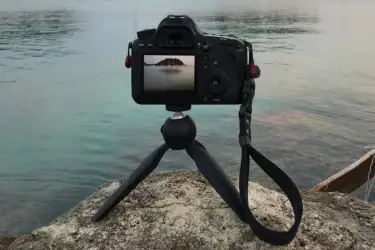The Canon 6D is still worth buying in 2024. When it was released in late 2012, the 6D was a great camera. And in 2024, it is still a great camera and can still take great photos. The Canon 6D was Canon’s entry-level full-frame camera. While newer models have superseded it, it is still a great way to get into full-frame photography and is still more than good enough for professional use.
You do not need the shiniest, latest bells and whistles camera to take great photos. You can do this with a Canon 6D Mk 1.
So, if you want a great full-frame DSLR camera, you can’t go wrong with the wonderful full-frame Canon camera, the Canon 6D.
Here is my now annual post where I ask a fundamental question about the Canon 6D, my go-to camera in 2024. Who’d have thought it, eh? And if you are thinking, the Canon 6D? Isn’t that an ancient camera? Read on……
Right, that is you told! In this post, I will tell you why the Canon 6D is still worth buying, giving you a great, economical route into the wonderful world of full-frame photography and excellent image capture capabilities.
Unfortunately, you cannot buy a new one in 2024, but second-hand ones can be bought for much less than the latest fangle-dangled things. I had a quick look and found a nice pristine one for less than £400 here in the UK.
Here is a photo of a Canon 6D, courtesy of Canon.
The Canon 6D
Now I know my 6D won’t live forever. At the end of this post, I will tell you what I will replace the Canon 6D with when it finally falls over for good. And I know I will need to upgrade my camera at some point, just not yet…….
I will also point you in the direction of some other stuff I have written that will interest you (hopefully).
First, who am I?
Great question. Who am I to tell you about this stuff? I am Rick McEvoy, a professionally qualified photographer (ABIPP). I am also professionally qualified in construction (MCIOB). I specialise in architectural, construction, and real estate photography. I photograph buildings. Well, you would hope so…..
- I have been doing both for more years than I would care to admit to.
- I also take photos of lovely places, and buildings in lovely places.
- And I am also the creator and all things at the most utterly splendid Photography Explained Podcast.
- And I also have a course – How To Become A Real Estate Photographer.
So I know about this stuff, OK?
Oh yes, I am a Canon user, and I have bought all my gear myself. Canon is not paying me to say this (not at the time of writing, but you never know one day). They should, as I have been using their gear for over 30 years!
I have been updating this post for several years, never expecting when I first wrote this post to be still using this wonderful camera all these years on, but here I am in 2024, still using my good old Canon 6D Mk 1.
Affiliate Links
There are lots of affiliate links in this post – if you click on one of these, you will be taken to that product on the Amazon website. And if you buy that product, I get a small commission, and you get my thanks!
But not for the Canon 6D itself – you can’t buy that new now. However, you can still get the three obvious replacements for the Canon 6D.
What about progress and technological advances?
Despite all the technological advances that can be found in shiny new cameras, well, certainly since 2012, the Canon 6D is still an excellent camera. And just because other cameras have advanced significantly since 2012, this does not automatically make the Canon 6D over the hill, past its sell-by date, irrelevant or obsolete. A better camera does not automatically mean better photos.
And this applies to many cameras released in the last, well, I don’t know, 15/ 20 years?
What did I have before the Canon 6D?
My first full frame camera was a Canon 5D Mk 1. This camera was first released in 2005 would you believe!
This is an image that I took with my Canon 5D, and it is still one of my favourite photos of Dorset.
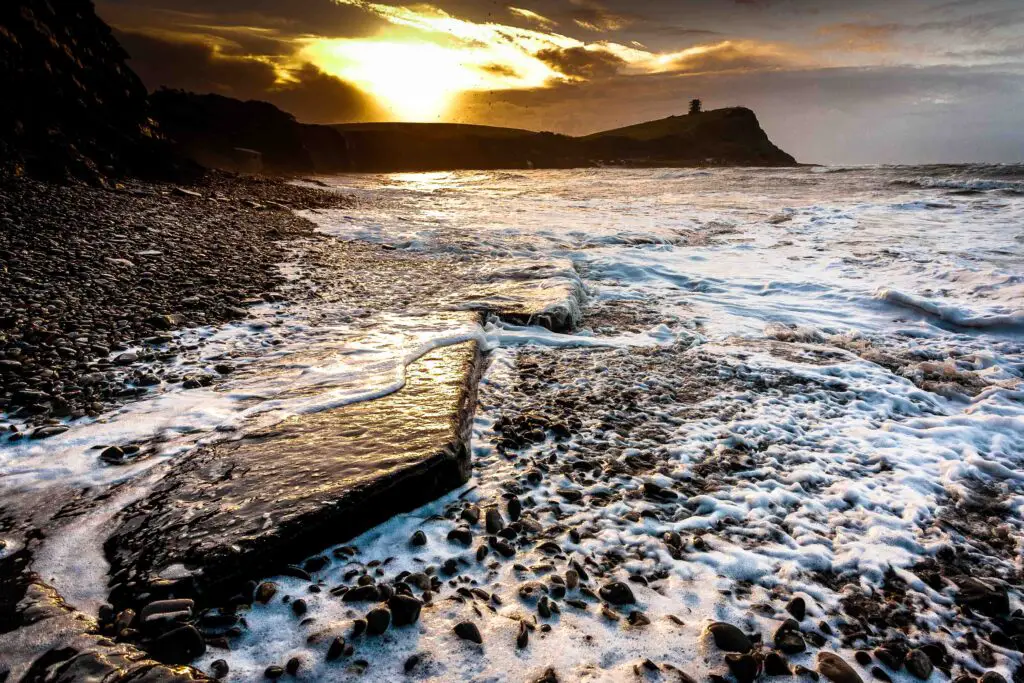
Ok – before I justify my statement about the Canon 6D still worth buying in 2024, I need to say something else.
Photography is not about gear. Photography is drawing with light: composition and creativity.
All this technical stuff is not as important as we think.
No one (other than us photographers) cares which camera you or I have used to capture an image. No one cares about the camera settings if a photo was taken in RAW or JPEG. A client has never asked me that question.
The only people who care about these things are other photographers. And I am not working for other photographers! And you are probably not taking photos for other photographers.
I am, however, helping photographers save money and spend more time taking photos, which is what photography should be all about.
What Is The Number 1 Most Important Thing In Photography?
The photos you create. And in my case, the photos that I give to my clients.
Most people care about the photo itself. That is all. Let us remember that. Everything else is irrelevant to the most important person to me in my photography business – my client. No one cares what you have taken the photo with, and most people do not care about dslr cameras and mirrorless cameras and all the stuff that goes with them – just the photo or photos that they are looking at.
So, no one cares but us photographers, right? And quite right too!
Right – time to get back to the subject.
I know. I complain too much about gear talk. But here, I am talking about gear. But I am talking about gear I already have and have learned to use inside out. And I am asking the question about the relevance of an older camera in 2024.
When I say talk, I mean write, of course – it is just that I type as I would talk, as things come into my head.
Let’s start at the beginning. What do I like so much about my Canon 6D?
Firstly, it just works.
Day in, day out. Having used it for so long, I know how it works inside and out. I can operate my camera in the dark with no problems. I can change lenses in the dark. Once I have found them, that is! I use my Canon 6D without thinking about the camera – it is intuitive. Canon hit a sweet spot with so much on the Canon 6D, which works for me.
Ok – so now for some specific features, in no particular order.
The sensor and the image quality
These, to me, are the same. I love the images that my Canon 6D produces. I love the look and feel that the RAW files give me.
I like the depth of detail that the full-frame sensor captures. I like the tones. I like the range of shadows and highlights, lights and darks. I also like the way that I can take bracketed sets and put the photos together in Lightroom.
I like the information that my Canon 6D records that I can work with. I like the photos that my Canon 6D takes. And that is a strong starting point. The Canon 6D sensor is up there for me as full-frame sensors go. And you will find loads of photographers who share my love of the Canon 6D. It is just one of those great cameras. And one that has captured great images for me for many years.
And there is just something about full frame sensors that I like.
Dynamic Range
The Canon 6D has a dynamic range of 11.5 stops. That is, in theory. This is more like 8-9 stops when all things are considered. We can see a range of tones of about 20 stops with our eyes. So, the Canon 6D captures less than half of the range of tones we can see. We can extend that by adding a couple of stops at either end using auto exposure bracketing, which works a treat.
More modern cameras will capture a broader range of tones, but this, in reality, is still more than good enough for me.
Low-light performance
Now, you will find many reviews that say that the low-light performance of the Canon 6D could be better. That is rubbish. We 6D users love the low light performance, and it can focus accurately in low-light conditions.
Focussing
The Canon 6D has 11 focus points. The Canon EOS R has 5655 focus points. You might want to read that again.
- The CANON EOS R HAS 5655 FOCUS POINTS.
- THE CANON 6D HAS 11 FOCUS POINTS
I have found the 11-point AF system, with just 11 focus points, just fine. I tend only to need to use one at a time anyway. So, what would I do with the other 5654 focus points on the Canon EOS R? I’m not quite sure (but I would like to find out one day if I am being honest with you). I may be missing something here, but all those AF points don’t change lens optics and what you can focus on?
The way I take my photos, I focus on one part of the composition, typically around 1/3rd into the scene.
And another thing about the focussing on the Canon 6D – it can focus in ridiculously low light. I don’t know how it compares to more technologically advanced cameras, but it focuses in ridiculously low light levels.
Do I need to be able to focus in near darkness?
Yes.
I take a lot of photos pre-sunrise and post-sunset but rarely have a problem with focussing.
I compose using the viewfinder and the LCD screen – this works fine even with the relatively small LCD screen and my ageing eyes!
If you research the autofocus of the Canon 6D you will find lots of people who say that it could be better, especially in low-light. I have no idea what they are talking about, and I have never had a problem focussing in low light.
Shutter speed range
The Canon 6D has a shutter speed range of 30 seconds to 1/4000th second. Plus Bulb, of course. And I have never needed anything else.
Battery life
I have four batteries for my Canon 6D. And on a regular shoot, I only need one fully charged battery, which usually does for me. I rotate the batteries so they all get a go and keep them in tip-top order. I have had these batteries for over 10 years, which is also remarkable.
A word about camera reviews and other people’s opinions
The Canon 6D has its critics. There always seems to be someone somewhere who has to criticise something, or always demand more, or find something better in an alternative (in this case camera) and draw on the negatives.
That is why we all have to be careful how we assess and value people’s opinions.
I have had people say that focussing on the Canon 6D is rubbish in low light. Really? I have never had a problem with this.
Someone else asked how I could work professionally as a photographer using a camera with only one memory card slot.
I have never had a card failure. Never. I look after my memory cards incredibly carefully. I don’t want to tempt fate now, but this has never happened.
You can find numerous negative reviews and comments on the Canon 6D, probably more bad press than good. But be careful with these people’s agendas – the Canon 6D is a great camera.
Back button focus
I know this is by no means a unique feature on the Canon 6D, but I still love this feature and the way the Canon 6D does it.
Why do I use back button focus?
Simple. I compose my image and then decide where I want to focus. Then, I choose an appropriate aperture. Then I press the shutter release button, which meters for the scene, and the self-timer starts. (I used to use a remote control, but that is another accessory consigned to the past).
I have separated focus from exposure and image capture. I take most of my photos on a tripod, meaning this makes perfect sense for me. This applies not only to my architectural photography but also to my travel and landscape photography.
This works for me.
Ergonomics of the Canon 6D
The Canon 6D fits in my hands, and the controls are all in very familiar and logical positions. I have never wished that things weren’t where they are. It is not that the camera is perfect; it is just that we have grown close to each other over the years! I do not believe there is such a thing as the perfect camera anyway.
The familiarity of my Canon 6D is like having a favourite pair of shoes; they mould to you over time and end up being so familiar and almost comfy!
I know – I am getting worryingly sentimental here. Having said that, we have been through a lot together, me and my Canon 6D!
Wi-Fi – very important
I use the Wi-Fi to take photos in unusual locations and from unusual viewpoints. This is an essential part of my work.
OK, the Canon Connect App is hardly cutting-edge, but most of the time, it works fine and allows me to do what I need.
Canon Camera RAW
Canon’s RAW format. I use this all the time – I never take photos with Jpeg. It is so good and gives me so much. Just awesome.
GPS built-in – how did I ever manage without this?
Another invaluable feature. I do a lot of travel photography – much more than I ever did, and also have other websites about specific travel photography locations. Now that I have mentioned them, I might as well tell you what they are.
And of course
And, of course, the Photography Explained Podcast website.
OK – advert over.
I need GPS, and the Canon 6D has it. I use the Map module in Lightroom a lot, which enables me to tell where I took photos.

Santorini photo locations from the Lightroom Map Module
I have also been known to stop and take photos when travelling – anytime I see something I like, I stop and take a photo, and the GPS tells me where I took the shot.
So an invaluable feature that I would not be without.
I use it on my various websites and in writing articles about my photography work.
Reliability over the years
My Canon 6D is a workhorse. It just works, day in, day out. I turn it on, and it is there for me. It has never failed, never let me down.
The Canon Ecosystem
Canon has been criticised for slow technological advances. For getting into mirrorless late. And for not innovating with the technology in their DSLRs.
There is, again, so much negativity. Take a step back, though, and look at the Canon ecosystem – it is an excellent place to be with lenses for every occasion.
The good old optical viewfinder and my dodgy old mince pies
I am 57 years old (much older than when I first wrote this post!). But I still love the good old optical viewfinder. Even with a dominant eye and a lazy one on the other side of my head! And I am short-sighted. And my near vision is much worse than it was. But the optical viewfinder still works for me. This is after years of complaining about the optical viewfinder and wishing I had an electronic viewfinder, also known as an EVF.
But do you know what – the optical viewfinder works just fine. The problem is with the dated LCD screen – more on that in a bit.
As grim as this sounds, this is the reality of being my age! And I am not going to get any younger!
My Olympus EM5 has an EVF – yes I also have a micro four thirds system for my travel photography. But I use my Canon 6D for my work.
Ageing might force me to buy a new camera – I had just thought about that when writing this!
It’s not all sweetness and light – there are things that are not perfect!
What do I not like about the Canon 6D?
GPS woes – a minor complaint tough
The GPS. If I do not manually turn off the GPS, it still runs and drains the battery when I turn off the camera. It’s downright infuriating, and there is no fix for this. I asked Canon people at the Photography Show some years ago.
I hope the Canon 6D Mk 2 and newer models have sorted this problem, as it drives me up the wall. And for no reason that I can think of.
A small thing, I know, but an irritation all the same.
The LCD screen
The LCD screen on the back of the camera is showing its age. Well, so am I, to be fair! It is not great when compared to my iPhone 15 Pro screen. But hardly a fair comparison, a 10-year-old camera screen and Apple’s latest and finest.
But no – the screen is much too small for me. To get around this, I have had to buy a Loupe Viewer. You can’t buy the one pictured below, but the link is current to a much better product.

This and the optical viewfinder got me around that problem, so all sorted. A tilt screen would be lovely – that is all I need. An articulating screen would, of course, be great, but just a nice straightforward tilt screen is all I ask for.
HDR Merge
There is an in-camera HDR merge feature on the Canon 6D, but bafflingly, this only works with JPEG files.
Why can’t any camera, not only the Canon 6D, do the HDR thing automatically in-camera? With RAW files, that is. It is only a case of taking three exposures and merging them together. Why do I have to do this in Lightroom?
If the Canon 6D did in-camera HDR with RAW files, I would only ever need the RAW HDR file, saving me so much time.
It has a horizontal level but not a vertical level
This is the other thing that is making me think about a new camera. When I use the electronic level, I get a big bright green line that tells me the camera is on level. There is not, however, another green line to tell me that my camera is vertical.
This is a genuine problem for me – I often cannot see the bubble on my Manfrotto tripod head.
And getting my camera properly level is very important for me. This is an issue with every architectural photo I take.
When I got the Olympus camera, I found out how much I value this feature, as it has both. This helps me get photos correct in camera, which is always my aim.
What is the working life of a Canon 6D?
I don’t know, to be honest.
Shutter actuations are the key thing here. The shutter, after all, is the major moving part and rather critical to the workings of the camera.
The Canon 6D shutter has a shutter rating of 100,000 actuations. How many shutter actuations have I made with my Canon 6D?
No idea.
I could get some software that will give me a number, but it is unlikely to be accurate.
But then again, I have deleted loads of photos. Oh, it doesn’t matter. I will keep using it until something happens. Knowing this will not change anything. This is what I call irrelevant detail anyway.
Let’s remember that 100,000 is a number to indicate the working life of a camera shutter relative to other cameras. This number is only used when comparing one camera to another – the number gives an idea of the relative robustness of two cameras.
The reality of my poor camera
A much more relevant factor is how many times I have dropped my camera and how many times I have got it wet.
Basically, how badly have I treated it?
- Dropping it – well, the big drop in the National Trust office at Corfe Castle resulted in an expensive repair (at a Canon Authorised repairer, I should add).
- And lots of small drops. Mostly onto rocks at sunrise.
- Water damage.
- Splashes by the sea.
- Being rained on (not a problem as it is weather-sealed).
- A quick spray of Mythos (the Greek beer for those who don’t know!)
- General wear and tear.
My camera has been with me everywhere I go. Every day I go anywhere, I put it in the boot of my car, and every night, I take it out again. It has been crammed into tight spaces on planes, buses, trains, and boats of various types. But has always been carefully looked after.
The working life of my Canon 6D is from now until it stops working!
Enough waffle – what about some photos taken with my Canon 6D?
Here are photos taken over the years I have had my Canon 6D
2014 – Chideock Catholic Church, Dorset, England
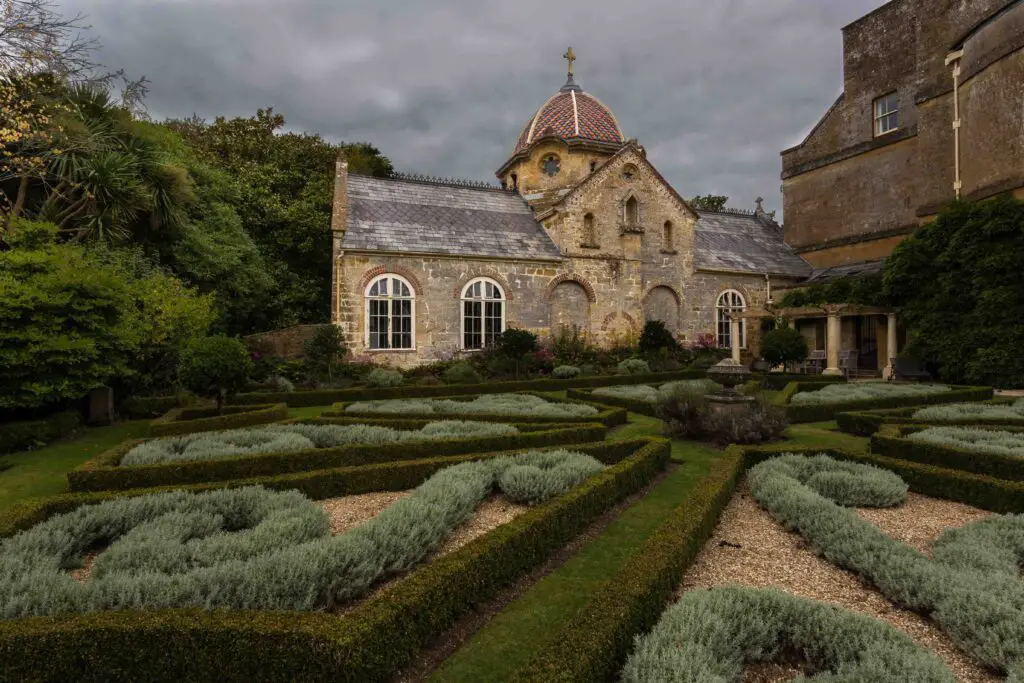
2015 – The New Forest, England
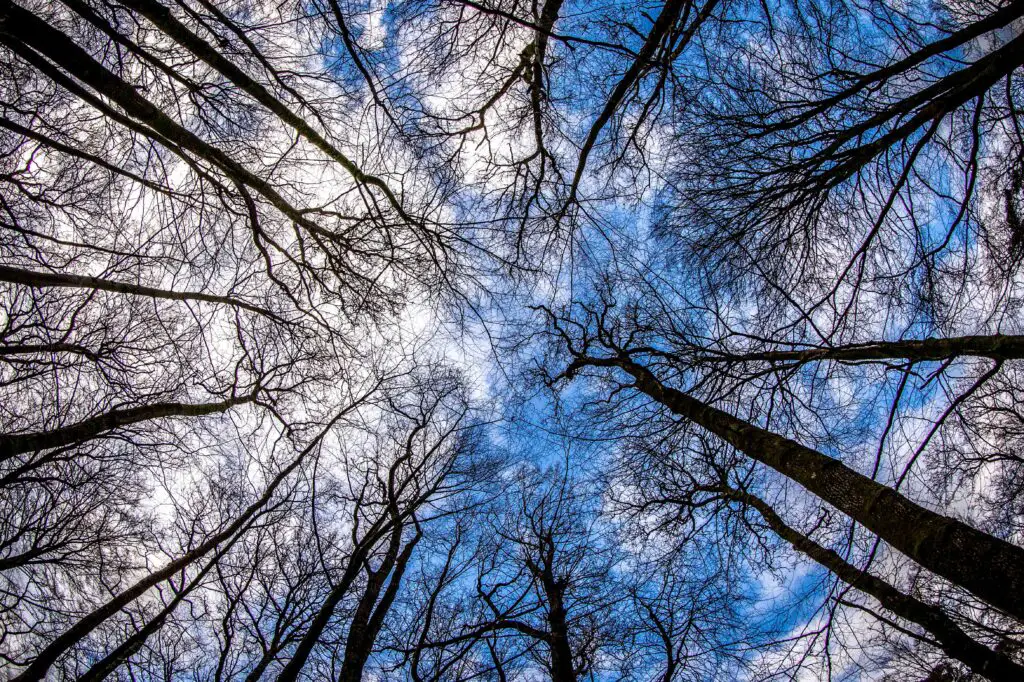
2016 – Cyprus Shipwreck

2017 – Entrance to the woods, Hampshire, England
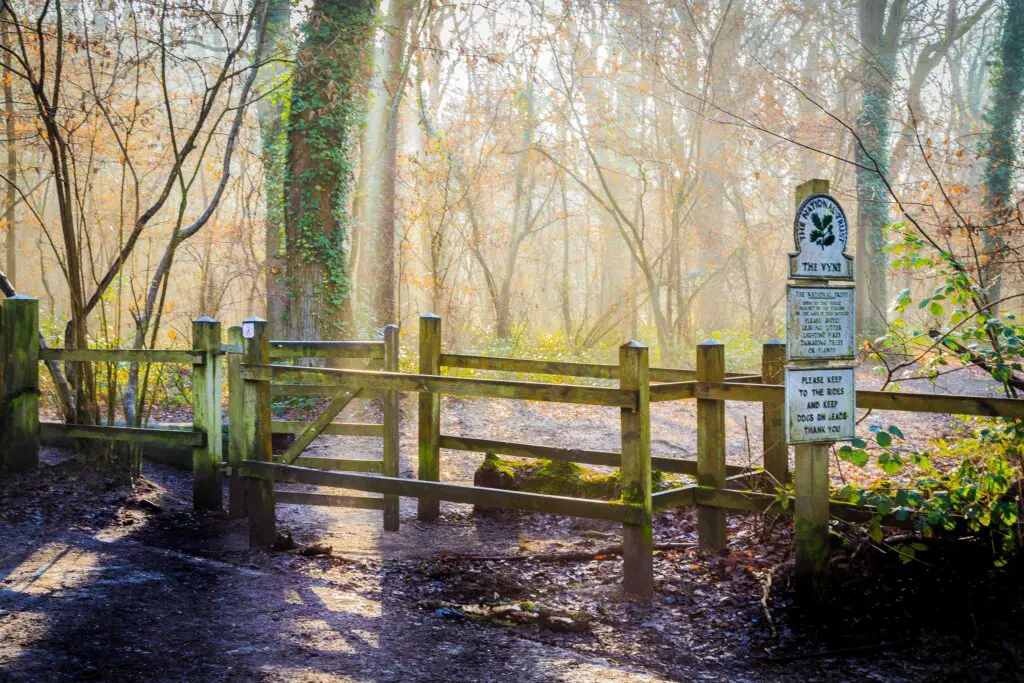
2018 London England Temple
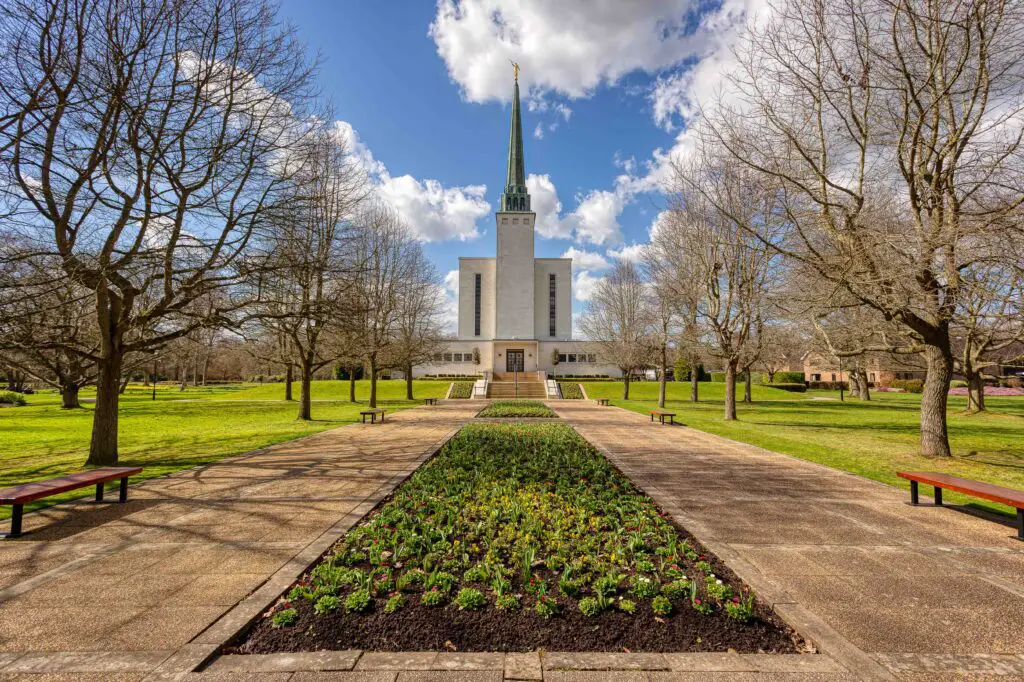
2019 – Operating Theatre, Southampton, England
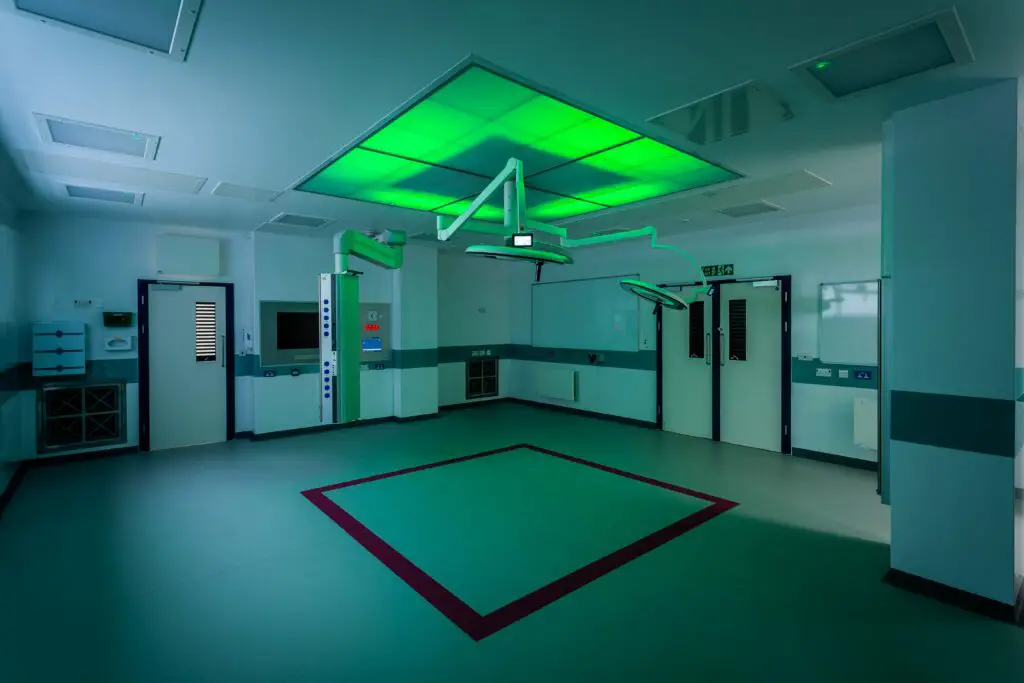
2020 – Harbour Lofts, Poole, Dorset
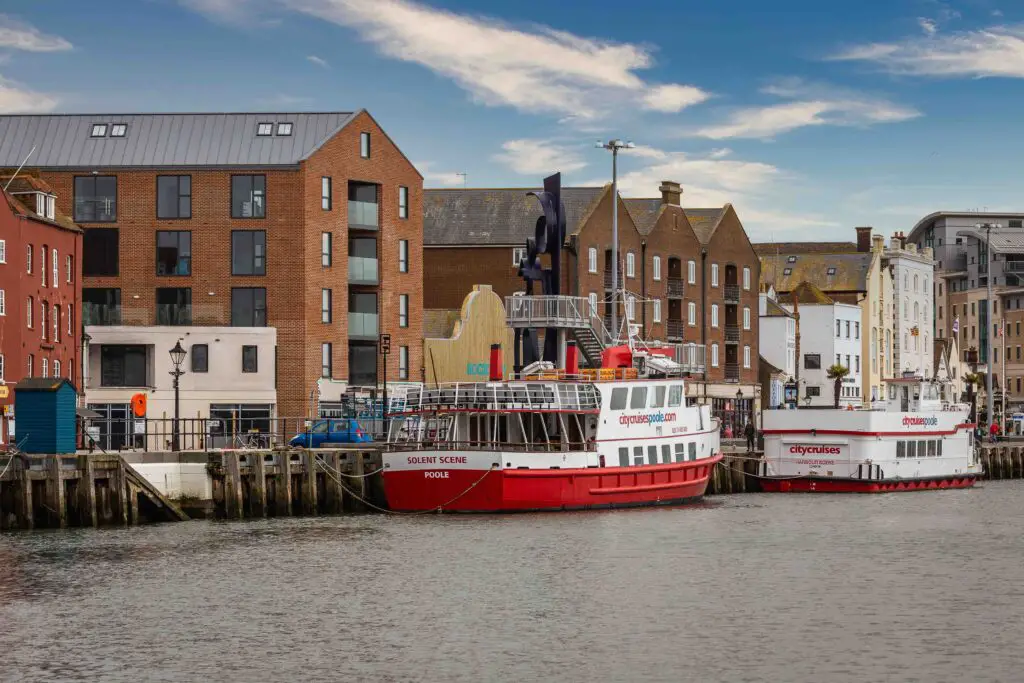
2021 – Sports Hall – Hampshire
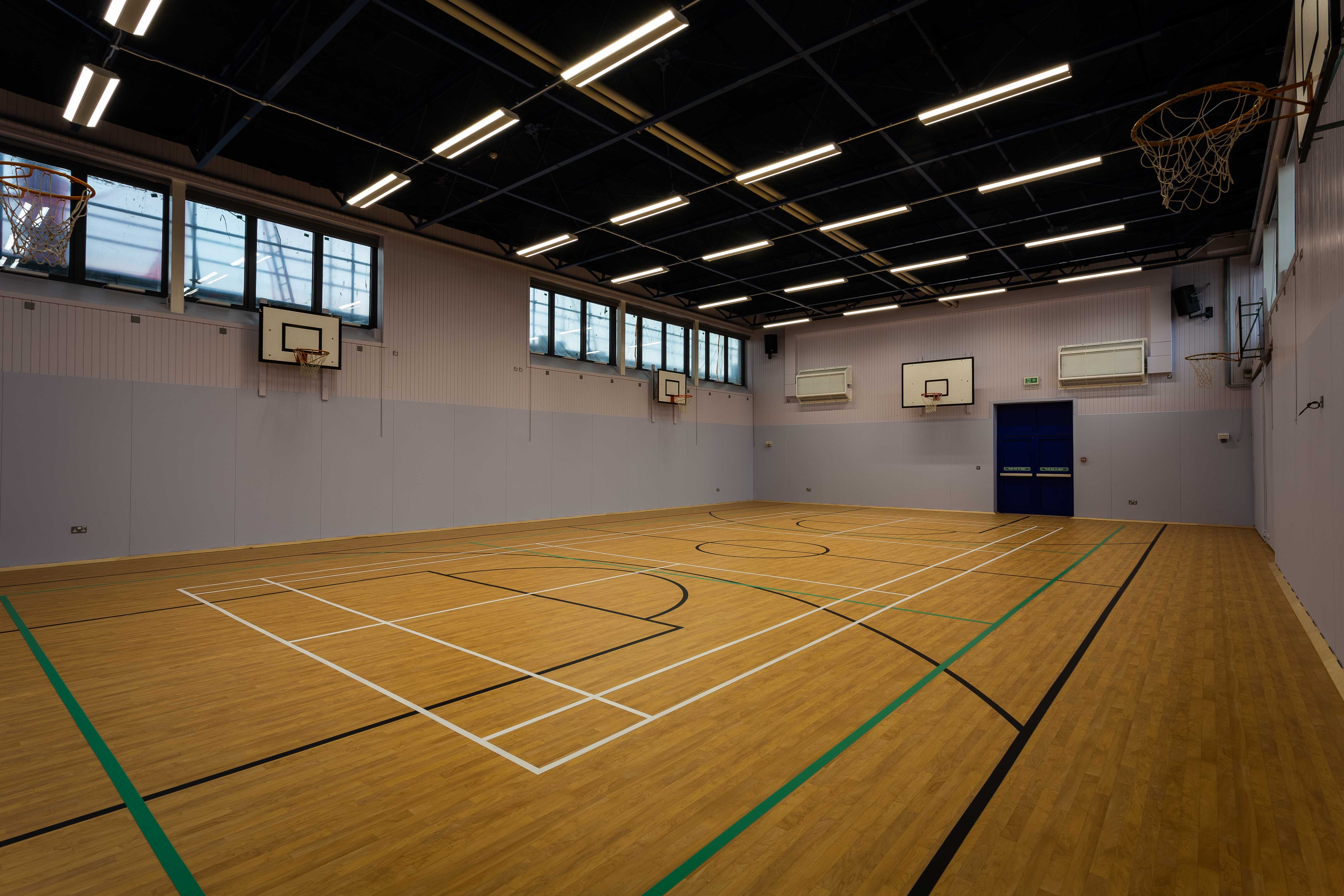
2022 – Construction Site, Southampton, England
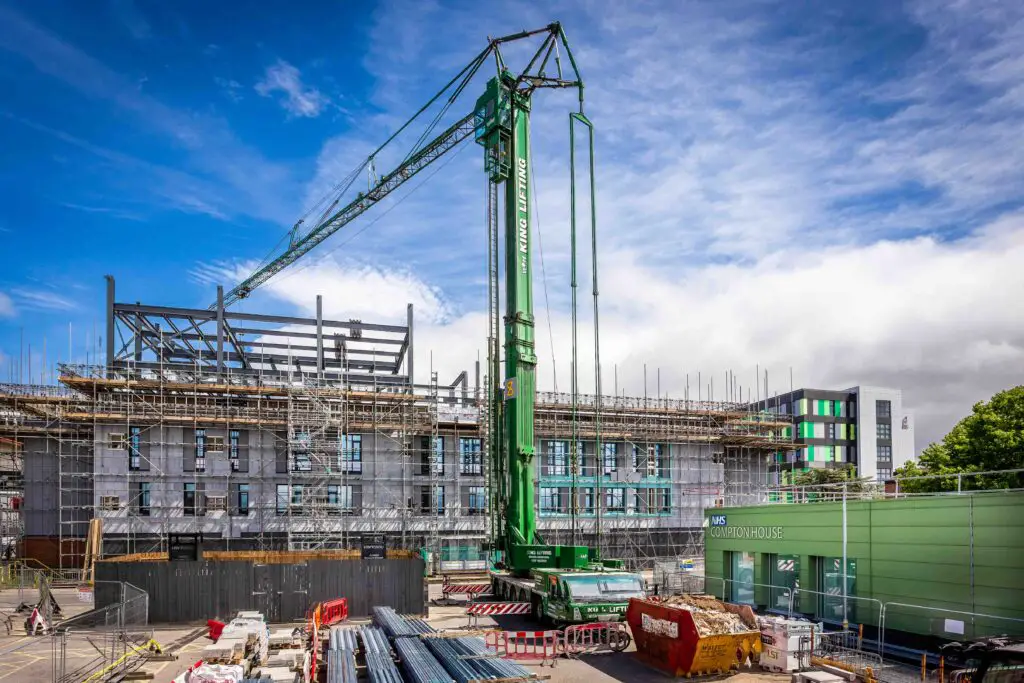
2023 – Building completion – Hampshire, England
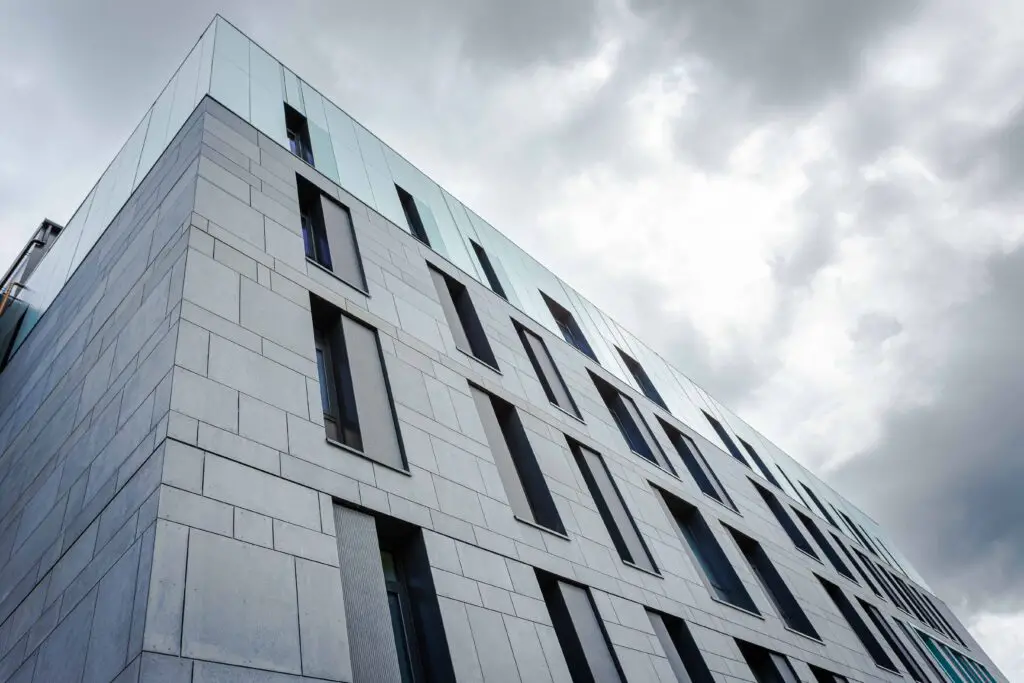
2024 – New Hospital Bed – Wiltshire
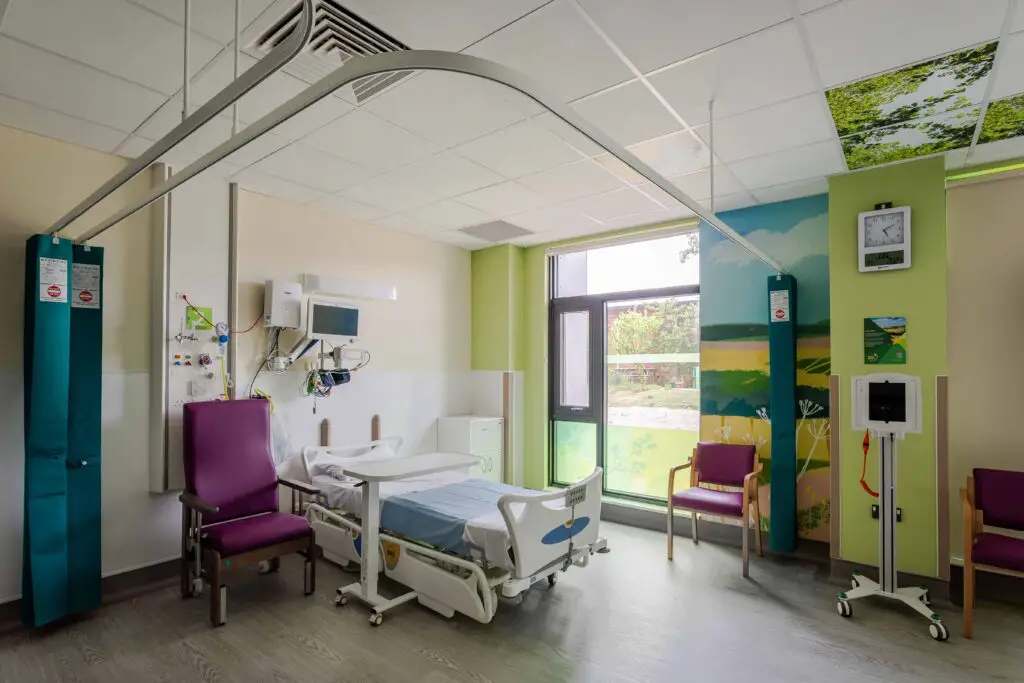
What lenses do I use with my Canon 6D?
I have just three lenses these days.
These are all I need to be honest. I use the 24-105 for travel photography and the 17-40 for most of my architectural work.
Well, I use my 17-40mm lens for 95% of my photos, like the one above.
I want something smaller and lighter, especially for travel photography.
For travel photography, I have invested in an Olympus OM-D EM5. I sold my Canon tilt-shift lens and bought this tiny camera and lens.
So, have I changed to another camera manufacturer?
I added, not changed. The only other manufacturer I have used is Fujifilm – my first “proper” camera was a Fujifilm (film) SLR.
I liked the look of Olympus and Fujifilm’s current offerings – this is based on a pretty superficial look at them in camera shops and some stuff I have heard – nothing too scientific or exacting. So I had a more in-depth look and went with Olympus micro four thirds.
I also have to say that I enjoy using my Olympus EM5 for travel photography. However, I still use my Canon 6D for commercial work.
Do I not want something shiny and new?
Yes, of course I do. After all that talk about how much I hate gear and the time spent talking about gear, I would love to have a new camera.
I love new tech gear. I was very excited to get a new iPhone 15 Pro
And every time I use my Apple Airpods, they make me smile.
But I must not forget this
I still enjoy using my Canon 6D, even after all these years.
But yes, I browse new kit at airports and in camera shops and have those background gear lust feelings.
Before I finish
Photography hasn’t really changed – photography is, after all, creating new photos.
Let’s not forget that – photography gear is just that – gear. Tools of the trade. The equipment we use to capture what we see in front of us.
If I get a new camera, will I take better photos?
No.
I will have additional features that will give me better opportunities to capture better images, but fundamentally, no.
My Canon 6D won’t last forever, though.
No, it won’t. What would I do now if I broke or it just expired?
What would I replace my Canon 6D with if I had to replace it right now?
There are things that I would need to have in a camera to convince me to change from my good old Canon 6D. These are the Canon options.
What about the Canon 6D Mk 2?
The Canon 6D Mk 2 version has some very cool features. It is a general evolution of the 6D Mk 1 into a more advanced camera.
In addition to all the 6D Mk 1 has, there are some cool new features.
- An articulated screen. And a touchscreen at that! A tilt screen would be good, but fully articulated would be ace.
- More resolution (but not too much) – 26 Megapixels
- A (slightly) better sensor than the 6D Mk 1
- Built-in time-lapse
But honestly, these things did not excite me enough to make me upgrade. My 6D Mk 1 is still working fine, thanks.
But the Canon 6D Mk 2 is a great camera. And there would be no problem with all my lenses and other bits of kit. And there is the familiarity of sticking with Canon.
And as for the other cameras? I am not looking…..
Back to the Canon 6D
I have written some other blog posts on the Canon 6D, which I will share with you here.
This is what I use to take photos – my Canon 6D, Canon 17-40mm lens and Manfrotto tripod and head
I like this picture – I captioned it “Happiness is……” – my Canon 6D looking at something very nice
I left my Canon 6D in Programme by mistake during my sunrise shoot in Altea!
My Canon 6D at work at this great Hampshire wedding venue
A picture of my Canon 6D sat on my Manfrotto Pixi looking at a fantastic sunrise view
Is the Canon 6D weather sealed?
Can Your Canon 6D Use EF-S Lenses?
11 easy steps to sharper photos on Canon 6D
2024 Update – What would I replace the Canon 6D with?
My Canon 6D is not going to last forever. This is what I would get to replace it.
The Canon EOS RP. This is not expensive, much like the Canon 6D, which was not expensive when it came out.
That will be fine for me.
Now, if Canon offered me the flagship Canon EOS R5, I would not say no, of course…
However, the other camera is the Canon 6D Mark 2. Unfortunately, there is no Canon 6 D Mark iii. Why not Canon?
Some other stuff that you might find interesting
I have updated my website, so if you are looking for more good stuff from me about all things photography, check out my Start Here page. This takes you right to the beginning of my website.
If you want to work with me on an architectural photography or construction photography project, I would like to point you in the direction of my Work With Me page.
If you want to learn more about photography, my Learn Photography With Me page is an excellent place to head to.
And I have a gear page, of course – here it is.
My Photography Explained Podcast
And yes, I have my very own utterly splendid photography podcast. Check out the Photography Explained Podcast website to find out all about it.
Related Viewing
Yes, there is even a video of this blog post, which you can watch on my YouTube channel.
Summary
Blimey. I can go on sometimes. Still, getting these things out of my head and into the wonderful world of the internet is good.
You may have noticed that I have used the term “it works for me” on more than one occasion. That sums it up nicely.
The Canon 6D still works for me in 2024. And I still love being part of the rich ef ecosystem of lenses. And I still love my full frame photography.
OK, I am done now
I hope you enjoyed this blog post and find the related posts to which I have also added links interesting.
Feel free to reach out to me through my website.
Cheers from me, Rick

